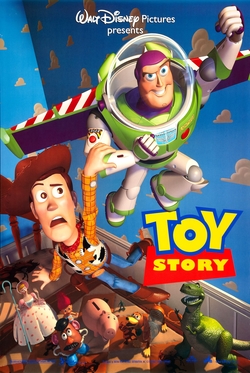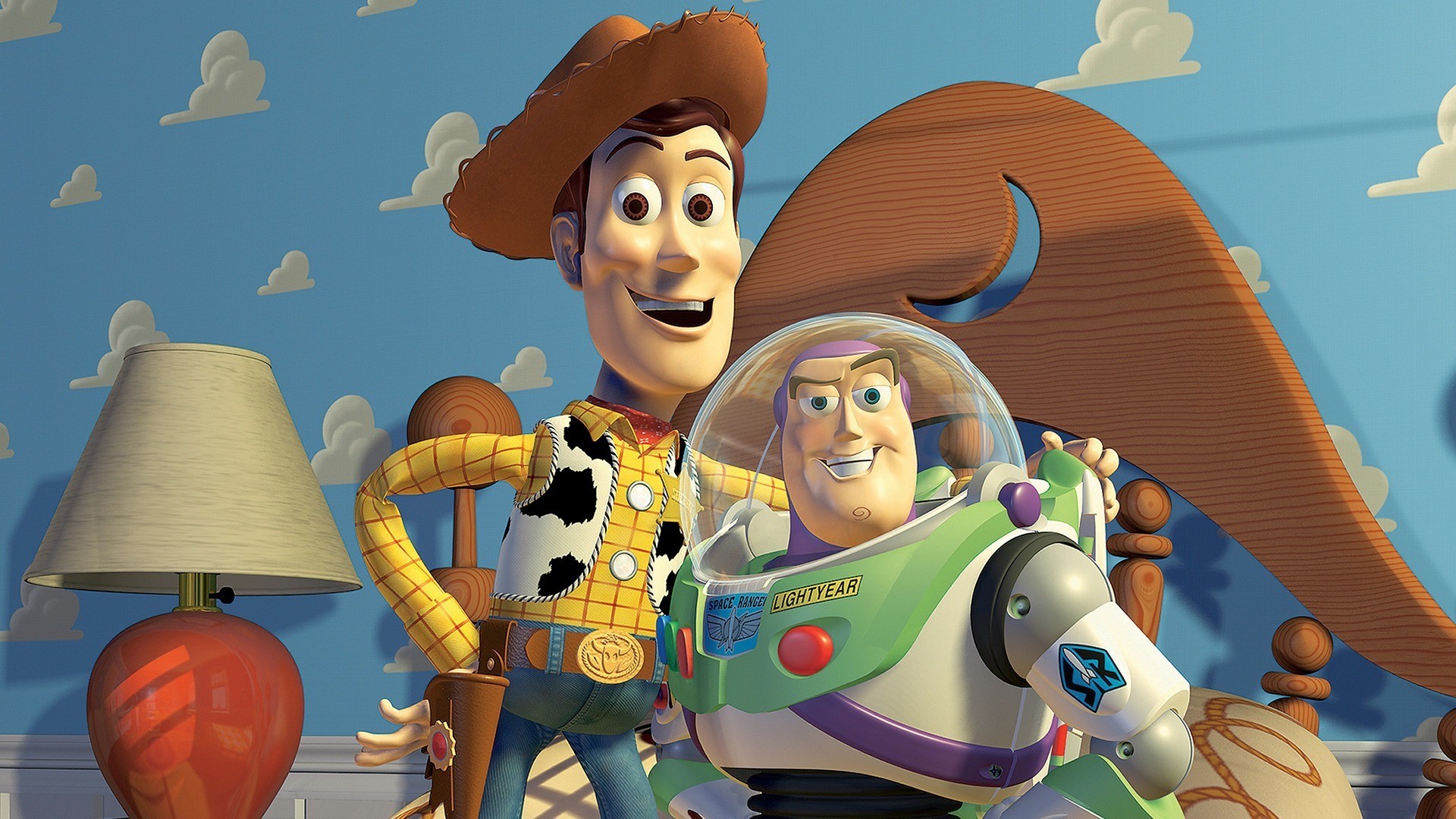Tuesday 27 December 2016
Sunday 25 December 2016
Monday 12 December 2016
Tuesday 6 December 2016
Film Review | Myth & The Hero's Journey | Toy Story
Do
you really think toys become “real” when humans are not around? Toy Story (1995), a family film directed
by John Lasseter, follows the adventures where toys live in a secret life (they
are real) when people are not there. Its main characters are an out of fashion
cowboy toy and the awesome and new space ranger toy who wants to replace him as
Andy’s favourite toy. And they both have a common villain, the kid who lives
next door. All this makes Toy Story
“A visionary roller-coaster ride of a movie” as Roger Ebert says on his webpage
crit.
 |
| Image 1 - Toy Story Poster |
This
film review is not only about Toy Story
itself, but also about the Hero’s Journey. The Hero’s Journey is what makes a
good story and is one of the best resources for writers. It was written by
Christopher Vogler and it is about 17 different steps that are on each phase of
the hero.
This
film review will be about the hero’s journey related to Toy Story. This film is a good example because, even though it
doesn’t have every step exactly like the Hero’s Journey outlines, it is very
close. There is no just one hero, there are two. Woody and Buzz are the main
characters and also the heros. They both have to go on this emotional journey:
Woody has to deal his fears of having to share Andy, and Buzz has to learn what
the real world is like and that he is just a toy. So, during the movie they
combine and flip the stages of the hero’s journey between them.
The
movie starts with the first stage: “The Ordinary World”. “The ordinary world”
is the world where Andy and the toys live. The toys come to life when Andy is not
around. They live free, happily and comfortably.
But
then, something new arrives to change “the ordinary world”, and this is the
next stage: the “call to adventure”. It is Andy’s birthday party and he gets a
new present - Buzz Lightyear – the newest, coolest Space Ranger Hero toy. Buzz replaces
Woody as Andy’s favourite toy. Woody – the Old West sheriff toy - tells himself
that this new toy is not going to change anything.
Woody’s
“refusal of the call” is about fear. Woody refuses the call of adventure when
he thinks that Buzz isn’t the coolest toy and he believes that he is still
Andy’s favourite toy. But everything has change and even though Woody tries to
keep his authority, Buzz disrupts the ordinary world they were living in, and
make the other toys being eager to be his friend and find more about him.
 |
| Image 2 - Film Still |
About
the “supernatural aid”, this is not much seen in Toy Story though they both take
sometimes that role. Woody mentors Buzz and shows him around the world of the
toys. And always through an indirect way, there are some other moments where
Buzz becomes Woody’s mentor as he teaches Woody that he will still be loved
even if someone else holds the rank of “Andy’s Favourite Toy”.
“Crossing
the Threshold” is one of the most important steps and it happens when the
adventure begins. Woody and Buzz are the main heroes because they go on in
their adventure and in this case Buzz and Woody begin their adventure going out
of the window as a result of an accident. So, they are both in this new scary
world.
The
next step is the “Belly of the Whale” and it happens when they have to fight
out some battles. In this case, Buzz and Woody get into the arcade game where
they find their new friends. They are meeting new people in their adventure.
This phase is about what this other world is about.
The
“Road of Trials” is when the main characters have to face even more battles.
Woody is desperately trying to achieve his goal, which is getting back home to
Andy. And Buzz refuses being just a toy. They also get in trouble because of
Sid, the bad kid of the neighbourhood.
“Meeting
with the Goddess” is the reversal of the Goddess. Sid is the opposite of the
Goddess as he is always torturing toys. And this is the moment when they
realize that they really need to get out of this situation.
Buzz’s
“Temptation” (“Woman as Temptress”) is when he tries to give up his life. Buzz
realizes that Woody was all right and he is just a toy. And Woody has his
“Atonement with the Father” when he realizes that his pride has led to his
fall. He has been abandoned by his friends because of being jealous and
selfish. And he has also lost Andy because he is about to die.
But
they didn’t give up. The “Apotheosis” is when Woody, Buzz and other Sid’s toys
fight the main battle. They break the rules and come to life in front of Sid.
After they fight out the main battle and get out of Sid’s yard, Woody and Buzz
reconcile and this is the “Ultimate Boon”. They start working together as a
team.
But
there is still a long way to go, and this is the next point: “The Magic Fight”.
Woody and Buzz are going back home. They see Andy’s moving truck and they chase
it.
 |
| Image 3 - Film Still |
Woody
and Buzz realize that they need friendship. Woody also realizes that Buzz is
not just a toy and he can do something more. And this is the “Rescue from
Without”: Buzz uses his retractable wings to fly and catch Andy’s car. Woody
and Buzz “Cross the Return Threshold” when they get into Andy’s car and Andy is
happy because he has found them again. “The Master of Two Worlds” is when they
all arrive at Andy’s new home.
And
finally, the last step is “Freedom to Live”. It is Christmas and Andy is
opening new toys. Woody and Buzz are happy to be friends. Buzz seems to be
quite nervous because of the idea of being replaced as Andy’s favourite toy,
and Woody is relaxed as he knows that he is still loved even if Andy has more
than one favourite toy.
 |
| Image 4 - Film Still |
This
81 minute running time story was the first Pixar feature film animated entirely
by computer. Roger Ebert said: “Watching the film, I felt I was in at the drawn
of a new era of movie animation, which draws on the best of cartoons and
reality, creating a world somewhere in between, where space not only bends but
snaps, crackles and pops”. This means that it is a film where the characters
are done in three-dimensions and they seem to be quite real, which is something
that the traditional drawing cannot fully achieve.
Toy Story is an all audience hyperrealist film
where imagination is an important part of a kid’s playtime: “It’s that the
rarest of all films, the one that can unify, not divide, the generations, as
both teenagers and their more innocent parents can connect with it. And of
course for the kids, it’s pure balm from heaven” (Stephen Hunter, Baltimore
Sun, 1995).
In
conclusion, Toy Story is an amazing
film where characters demonstrate loyalty, courage and teamwork. Still
recommended nowadays, and still having a long way ahead as Buzz Lightyear’s
most memorable quote says: “To infinity and beyond”.
Bibliography:
Ebert,
Roger (1995) “Toy Story” At: http://www.rogerebert.com/reviews/toy-story-1995 Accessed on: 04/12/2016
Hunter,
Stephen (1995) “Toy Story looks funny,
feels great Movie review: Computer wizardry is the least of this delightful
movie’s pleasures”. At: http://articles.baltimoresun.com/1995-11-22/features/1995326035_1_toy-story-graf-zepplin-meets-toy Accessed on: 04/12/2016
Minow,
Nell (2003) “Toy Story (1995)” At https://www.commonsensemedia.org/movie-reviews/toy-story-1995# Accessed on: 04/12/2016
Illustration
list:
Figure
1. Toy Story (1995) [Film Poster] At: http://www.disney.co.uk/toy-story/pictures Accessed on: 04/12/2016
Figure
2. [Film Still] At: http://thestorydepartment.com/structure-toy-story-1/
Accessed on: 04/12/2016
Figure
3. [Film Still] At: http://toystory.disney.com/ Accessed on: 04/12/2016
Figure
4. [Film Still] At: http://www.disney.co.uk/toy-story/pictures Accessed on: 04/12/2016
Saturday 26 November 2016
Monday 21 November 2016
Saturday 19 November 2016
Monday 14 November 2016
Monday 7 November 2016
Wednesday 2 November 2016
Wednesday 26 October 2016
Friday 21 October 2016
Thursday 20 October 2016
Friday 14 October 2016
Subscribe to:
Posts (Atom)

















































